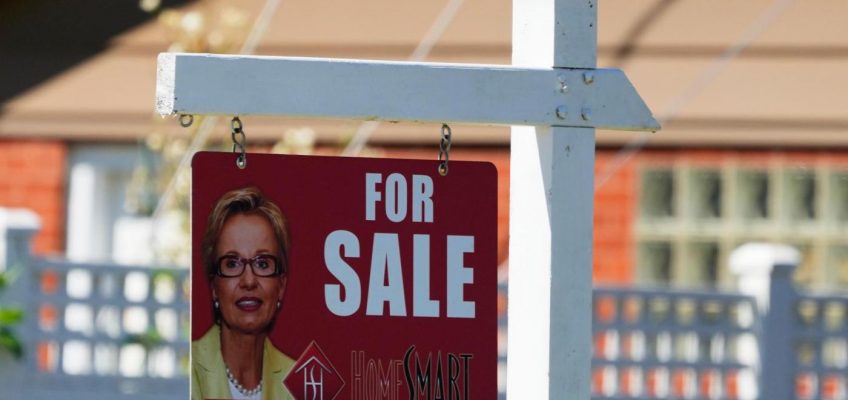By TERRY TANG and AMELIA THOMSON-DEVEAUX
WASHINGTON (AP) — Slightly less than half of U.S. adults believe that Black people face “a great deal” or “quite a bit” of discrimination in the United States, according to a poll. That’s a decline from the solid majority, 60%, who thought Black Americans faced high levels of discrimination in the spring of 2021, months after racial reckoning protests in response to the police killing of George Floyd.
Significant numbers of Americans also think diversity, equity and inclusion efforts, also known as DEI, are backfiring against the groups they’re intended to help, according to the survey from The Associated Press-NORC Center for Public Affairs Research, including many people who belong to those groups.
The findings suggest Americans’ views on racial discrimination have shifted substantially since four years ago, when many companies launched efforts to promote diversity within their workforces and the products they sold.
Since then, many of those companies have reversed themselves and retreated from their diversity practices, a trend that’s accelerated this year under pressure from President Donald Trump, a Republican who has sought to withhold federal money from schools and companies that promote DEI.
Now, it’s clear that views are changing as well as company policies.
Claudine Brider, a 48-year-old Black Democrat in Compton, California, says the concept of DEI has made the workplace difficult for Black people and women in new ways.
“Anytime they’re in a space that they’re not expected to be, like seeing a Black girl in an engineering course … they are seen as only getting there because of those factors,” Brider said. “It’s all negated by someone saying, ‘You’re only here to meet a quota.’”
Reversal in views of racial discrimination
The poll finds 45% of U.S. adults think Black people face high levels of discrimination, down from 60% in the spring of 2021. There was a similar drop in views about the prevalence of serious discrimination against Asian people, which fell from 45% in the 2021 poll — conducted a month after the Atlanta spa shootings, which killed eight people, including six women of Asian descent — to 32% in the current survey.
There’s no question the country has backtracked from its “so-called racial reckoning” and the experiences of particular groups such as Black people are being downplayed, said Phillipe Copeland, a professor at Boston University School of Social Work.
Americans’ views about discrimination haven’t shifted when it comes to all groups, though. Just under half of U.S. adults, 44%, now say Hispanic people face at least “quite a bit of discrimination,” and only 15% say this about white people. Both numbers are similar to when the question was last asked in April 2021.
Divisions on the impact of DEI on Black and Hispanic people
The poll indicates that less than half of Americans think DEI has a benefit for the people it’s intended to help.
About 4 in 10 U.S. adults say DEI reduces discrimination against Black people, while about one-third say this about Hispanic people, women and Asian people. Many — between 33% and 41% — don’t think DEI makes a difference either way. About one-quarter of U.S. adults believe that DEI actually increases discrimination against these groups.
Related Articles
Ranchers say expanding herds to take advantage of record retail beef prices isn’t so simple
Virginia Giuffre’s family expresses shock over Trump saying Epstein ‘stole’ her
Arkansas teacher charged with killing couple who were hiking in Devil’s Den with their kids
Fireflies are lighting up summer skies. But the glowing bugs are still on the decline
A key US inflation gauge rose last month as Trump’s tariffs lifted goods prices
Black and Hispanic people are more likely than white people to think DEI efforts end up increasing discrimination against people like them.
About 4 in 10 Black adults and about one-third of Hispanic adults say DEI increases discrimination against Black people, compared with about one-quarter of white adults. There is a similar split between white adults and Black and Hispanic adults on assessments of discrimination against Hispanic people.
Among white people, it’s mostly Democrats who think DEI efforts reduce discrimination against Black and Hispanic people. Only about one-quarter of white independents and Republicans say the same.
Pete Parra, a 59-year-old resident of Gilbert, Arizona, thinks that DEI is making things harder for racial minorities now. He worries about how his two adult Hispanic sons will be treated when they apply for work.
“I’m not saying automatically just give it to my sons,” said Parra, who leans toward the Democratic Party. But he’s concerned that now factors other than merit may take priority.
“If they get passed over for something,” he said, “they’re not going to know (why).”
About 3 in 10 say DEI increases discrimination against white people
The poll shows that Americans aren’t any more likely to think white people face discrimination than they were in 2021. And more than half think DEI doesn’t make a difference when it comes to white people or men.
But a substantial minority — about 3 in 10 U.S. adults — think DEI increases discrimination against white people. Even more white adults, 39%, hold that view, compared with 21% of Hispanic adults and 13% of Black adults.
The recent political focus on DEI has included the idea that white people are more often overlooked for career and educational opportunities because of their race.
John Bartus, a 66-year-old registered Republican in Twin Falls, Idaho, says that DEI might have been “a good thing for all races of people, but it seems like it’s gone far left.” It’s his impression that DEI compels companies to hire people based on their race or if they identify as LGBTQ+.
“The most qualified person ought to get a job based on their merit or based on their educational status,” Bartus said.
Brider, the Black California resident, objects to the notion that white people face the same level of discrimination as Black people. But while she thinks the aims of DEI are admirable, she also sees the reality as flawed.
“I do think there needs to be something that ensures that there is a good cross-section of people in the workplace,” Brider said. “I just don’t know what that would look like, to be honest.”
The AP-NORC poll of 1,437 adults was conducted July 10-14, using a sample drawn from NORC’s probability-based AmeriSpeak Panel, which is designed to be representative of the U.S. population. The margin of sampling error for adults overall is plus or minus 3.6 percentage points.




